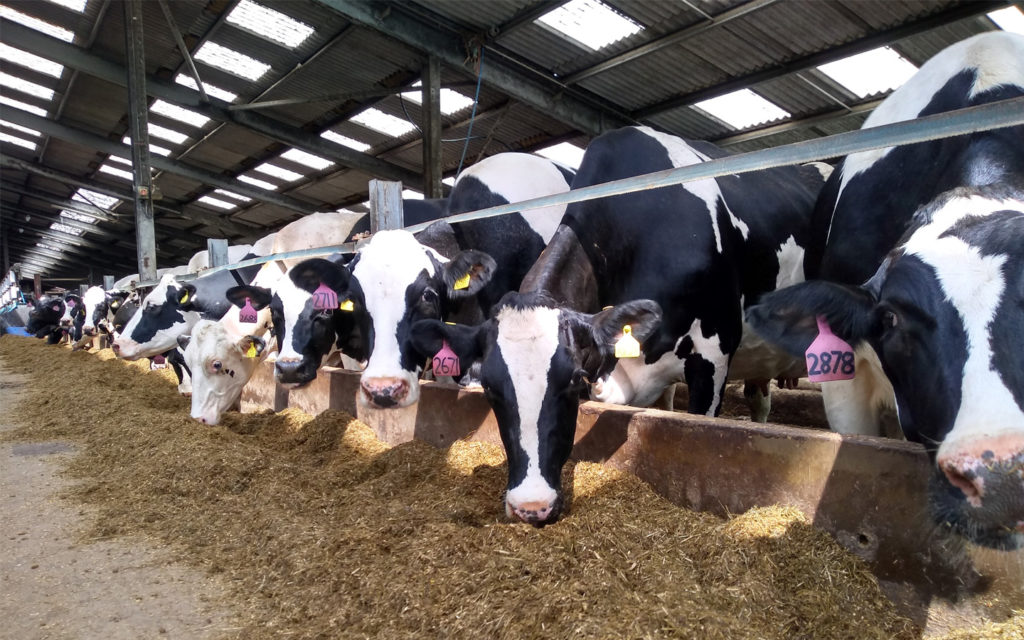Methane production and what can we do about it?
4 March 2022Depending on body size and nutrition, dairy cows can produce up to 500 litres of methane (CH4)/day, contributing between 45-50% of a dairy farm’s carbon footprint (CFP). Methane mainly comes from enteric fermentation, the natural process of fibre digestion in the rumen. Measures to reduce total CH4 emissions, as well as per kg of milk, include:
- Forage quality – the higher the better. Higher D value (digestibility) forages have a lower fibre content, meaning less CH4 production during rumen fermentation. They also enable higher intakes, leading to more milk output and so less CH4 per kg of milk. Cutting date will have the biggest influence on forage quality.
- Increase concentrates – feeding more concentrates in place of silage will reduce CH4 production. Concentrate type is also important as those with a higher NDF (fibre) content e.g., sugar beet pulp and soya hulls, will produce more CH4 than starchy, lower NDF cereals and some protein sources. A milk yield response is also likely, again reducing CH4/kg of milk.
- Age at first calving – this can have a significant impact on total herd emissions as dairy heifers will be producing CH4 but have no milk output to spread emissions over. Research by AFBI showed that reducing calving age of heifers from 27 to 24 months reduced the CPF by 7% for a typical moderate input herd in Northern Ireland.
- Replacement rate – reducing the replacement rate means less heifers are required to maintain herd size. Longevity also improves as a typical 33% replacement rate means a cow lasts for three lactations, but this increases to five lactations with a 20% replacement rate. Focus on health and fertility to reduce replacement rate and heifer requirements.
Not only will these improvements reduce a farm’s CFP, but they should also bring financial benefits.
For more advice, visit the dairy section of our website or, if you’ve got a specific query, call or email our advice line, details here.
Sign up to the FAS newsletter
Receive updates on news, events and publications from Scotland’s Farm Advisory Service

